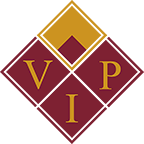As part of the Coronavirus Aid, Relief, and Economic Security (CARES) Act, signed into law March 27, many small business owners were able to apply for – and receive – a loan of up to $10 million under the Paycheck Protection Program (PPP). Businesses – including nonprofits, veterans’ organizations, Tribal entities, self-employed individuals, sole proprietorships, and independent contractors – that were in operation on February 15 and that have 500 or fewer employees are eligible for the PPP loans. If the loan proceeds are used as specified, business owners may apply to have the loan forgiven.
Here’s what you need to know about loan forgiveness under the PPP:
Covered Period
The loan covers eight weeks (56 days) of payroll, rent, mortgage interest and utility expenses. Employers must keep employees on their payroll through June 30. Generally, the first day of the covered period is the same day as the loan disbursement. For example, if the loan proceeds were received on Wednesday, April 22, that is the first day of the covered period. The last day of the covered period would then be Tuesday, June 16.
Alternate Payroll Covered Period. If you pay your employees weekly or bi-weekly, you may elect to have the eight-week (56-day) period begin on the first day of the first pay period following the PPP loan disbursement date. In this case, if the loan proceeds were received on Wednesday, April 22, and the first day of the first pay period following the loan disbursement is Monday, April 27, the first day of the Alternative Payroll Covered Period is April 27 and the last day of the Alternative Payroll Covered Period is Sunday, June 21.
Eligible Expenses
PPP loans cover both payroll costs and nonpayroll costs; however, to be eligible for loan forgiveness, 75 percent of the PPP loan proceeds must go toward payroll costs, with the remaining 25 percent toward nonpayroll costs. For example, a business owner that received loan proceeds of $250,000 must use $187,500 of that amount on payroll costs to be eligible for loan forgiveness. The remaining $62,500 can be used to pay nonpayroll costs as specified below.
If your business does not meet the 75 percent requirement, there will be a proportionate reduction in loan forgiveness – not a complete loss.
Eligible payroll costs. Payroll costs include costs for employee vacation, parental, family, medical, and sick leave. The total amount of cash compensation – payroll costs paid and payroll costs incurred – for each individual employee may not exceed $15,385 for the covered period of eight weeks (56 days) based on an annualized salary of $100,000.
Bonuses can be included as long as this threshold amount is not exceeded. Self-employed individuals and owner employees can use PPP loan funds to cover owner compensation costs for a period of eight weeks only (8/52 of 2019 net profit from Form 1040 Schedule C).
To count toward eligible payroll expenses, employer contributions for retirement plans as well as health insurance must be paid during the covered period.
Loan forgiveness is based on full-time equivalent (FTE) workers and a standard 40-hour work week. A simplified method allows 1.0 FTE for 40 hour work weeks and 0.5 FTE for less than 40 hour work weeks. Calculations can be done using either method to determine which one is most advantageous to the employer. Special rules apply for workers whose salary has been reduced by 25 percent or more. Please call if you have any questions about this.
Businesses that received PPP loans can exclude laid-off employees from loan forgiveness reduction calculations if the employees turn down a written offer to be rehired.
Eligible nonpayroll costs. Specific nonpayroll costs are also eligible for forgiveness; however, they cannot exceed 25 percent of the total forgiveness amount. They must be paid or incurred during the covered period and paid on or before the next regular billing date, even if the billing date is after the covered period and can include costs that were paid and incurred one time.
- Payments of interest on any business mortgage obligation on real or personal property incurred before February 15, 2020. These amounts do not include any prepayment or payment of principal
- Business rent or lease payments (including leases for vehicles and office machinery) entered into force before February 15, 2020; and
- Business utility payments for services begun before February 15, 2020 such as electricity, gas, water, transportation, telephone, or internet access.
- Interest payments on debt obligations incurred before February 15, 2020
- Refinancing an SBA EIDL loan made between January 31, 2020, and April 3, 2020
Self-employed individuals can use PPP loan funds to cover interest, rent and utility payments are also eligible as long as these amounts are deductible on Form 1040 Schedule C.
Loan Amounts not Forgiven
Any amounts that aren’t forgiven must be repaid in two years at an interest rate of 1 percent, which begins to accrue upon loan disbursement. Payments, however, are deferred for six months following the disbursement of the loan.
Tracking Expenses
Business owners need to keep accurate records of how PPP loans are used. Failing to document or falsely claiming eligible expenses could lead to criminal penalties.
Don’t Delay. Start Planning Now to Maximize PPP Loan Forgiveness
If you’ve received a PPP loan and want to make sure your loan is forgiven, help is just a phone call away.

